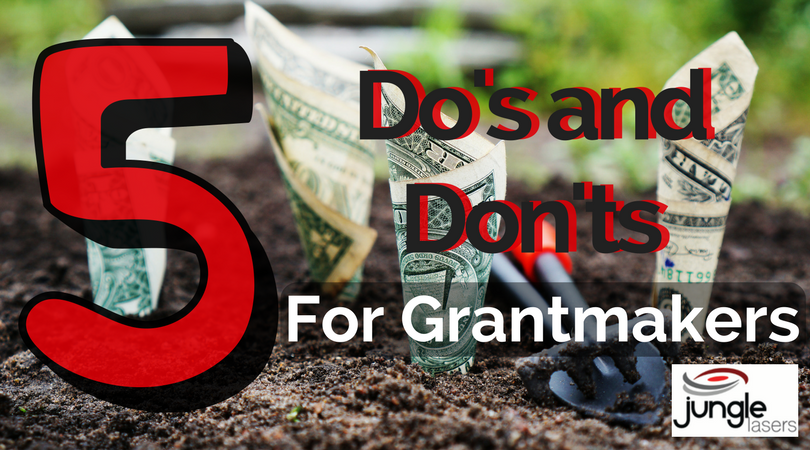Last week we shared a post, “5 Do’s and Don’ts for Grant Seekers,” highlighting common mistakes grantees make in the fundraising process.
You didn’t think we were going to let the grantmakers off easy, did you?
It is important for grantees to reach out to their funders and follow proper grantwriting guidelines, but it is a grantmaker’s job to supply their fund recipients with the appropriate tools in order to carry out real philanthropic success.
Don’t: Force your grantees to work together.
Do: Encourage grantee coalitions.
According to Alliance Magazine, “coalitions offer the potential for outreach to more constituencies; a greater range of tactical strengths; more diverse perspectives on the issue; and greater credibility with decision-makers.” In other words, grantmakers have an opportunity to leverage their investment and broaden their community impact by connecting grantees that could benefit from the strengths of one another.
Don’t: Compete with other foundations.
Do: Keep an eye on the work of other foundations.
Keep in mind that you work for a foundation, not a chain restaurant. If a foundation similar to yours is already achieving great results from a project, connect, and get involved! Rather than competing, offer to sponsor a portion of the project or to expand the idea to your community.
On January 25, 2018 our client, Arizona Community Foundation announced a $1.24 million public-private investment to support a program that creates career opportunities in Arizona. AZ Community Foundation partnered up with the Rodel Foundation of Arizona and the Ellis Center for Educational Excellence to help fund the philanthropic investment.
Follow foundations similar to yours on social media and sign up for their newsletters in order to stay updated on trends and enhance your own social media strategy. If you focus your efforts on being effective you will have a greater impact on your community
Don’t: Just give more money to make a stronger impact.
Do: Give more than just money to make a stronger impact.
This tip is not to discourage your organization from awarding more funds to grantees. If your foundation can, you probably should provide more funding. However, you may want to think of other ways your organization can support your grantees beyond funds like providing them with your list of relevant connections and provide insight and advice from industry leaders in your networks.
Don’t: Let success stories speak for themselves.
Do: Document and share the victories of your grantees.
It is important that your organization documents the successes of your grantees that you can easily reference for the future. The Council on Foundations states in their Private Foundation Toolkit, “
The Arizona Community Foundation does a great job of displaying the accomplishments of their grantees on their website’s Stories of Impact page.
Don’t: Evade the truth when writing a grant application rejection letter.
Do: Deliver bad news honestly and perceptively.
Letters of denial can be hard to write but receiving them can be pretty awful too. Rejections often come across as cold and apathetic. Take the time to inform the rejected applicant of why they weren’t chosen. Maybe the prospective grantee didn’t follow the application guidelines exactly, maybe the applicant was asking for more than what your organization is able to give, or maybe the application is from an organization or a particular cause that you don’t support. No matter the reason, be honest. In concluding your rejection letters, be sure to encourage appropriate applicants to apply again in the future and inform others that your organizations wouldn’t make a good match.
Did any of these do’s and don’ts ring true for your organization? The purpose of philanthropy is to make the world a better place, one community at a time. Providing your grantees with support can be as simple as sharpening or modifying your current grantmaking strategies.
Subscribe to our blog by providing your name and email below!


Leave A Comment